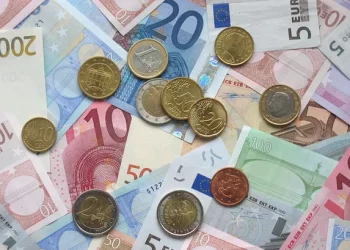The Japanese Yen (JPY) extended its gains on Wednesday, dragging the USD/JPY pair to a fresh two-week low in the mid-143.00s during the Asian session. A combination of hawkish signals from the Bank of Japan (BoJ), geopolitical tensions, and a broadly weaker U.S. Dollar (USD) have amplified demand for the safe-haven currency.
Investor sentiment around the Yen has been buoyed by growing expectations that the BoJ will raise interest rates again in 2025, amid mounting concerns over sustained inflation in Japan. These expectations were reinforced by BoJ Deputy Governor Shinichi Uchida’s remarks earlier this week, in which he stated that underlying inflation could reaccelerate and stabilize near the 2% target, paving the way for additional rate hikes.
Adding to the JPY’s strength are renewed U.S.-China trade tensions. Optimism over a possible trade truce quickly faded after the U.S. issued fresh guidance warning companies against using Huawei’s Ascend AI chips, fueling concerns about worsening bilateral relations. China responded on Wednesday, accusing the U.S. of “unilateral bullying” and warning that the measures jeopardize the stability of the global semiconductor supply chain.
Meanwhile, the U.S. Dollar is under pressure due to fiscal concerns and increased speculation that the Federal Reserve will cut interest rates further in 2025. This follows last week’s softer U.S. CPI and PPI data, as well as disappointing retail sales figures. Fed officials echoed a cautious tone during a Tuesday panel, with San Francisco Fed President Mary Daly and Cleveland Fed President Beth Hammack both expressing uncertainty about the economic impact of current trade and fiscal policies.
Further bolstering the Yen is optimism over a potential U.S.-Japan trade deal. High-level talks are underway in Washington this week, with Japan’s Trade Minister Ryosei Akazawa and U.S. Trade Representative Jamieson Greer leading negotiations. U.S. Treasury Secretary Scott Bessent is also expected to participate. U.S. officials are reportedly pushing for a swift resolution, hinting that a deal could materialize sooner than expected.
Despite an unexpected trade deficit in April—Japan posted a ¥115.8 billion shortfall following a ¥559.4 billion surplus the prior month—the Yen’s upward momentum remained intact. The deficit was driven by a slowdown in exports due to softer U.S. demand, while imports declined less than forecast, supported by strong domestic consumption following wage increases.
USD/JPY Technical Outlook: Bearish Bias Strengthens
Technically, the USD/JPY pair has breached a key support zone between 144.30 and 144.20, which includes the 50% Fibonacci retracement of the April-May rally and the 200-period SMA on the 4-hour chart. Momentum indicators are beginning to tilt bearish on the daily timeframe, suggesting scope for further downside.
A sustained drop below the 144.00 handle would reaffirm the bearish outlook, with the next support seen at 143.65–143.60, followed by 143.25—aligned with the 61.8% Fibonacci retracement.
On the upside, immediate resistance lies at 144.55, with further gains potentially capped near the psychologically significant 145.00 level. Any recovery beyond this zone is expected to face strong selling pressure near the 145.35–145.40 region, corresponding to the 38.2% Fibonacci level, which marks a key inflection point for shifting market sentiment.
As global uncertainty persists and monetary policy divergence widens, the Yen appears well-positioned to maintain its upward trajectory in the near term.
Related Topics:























